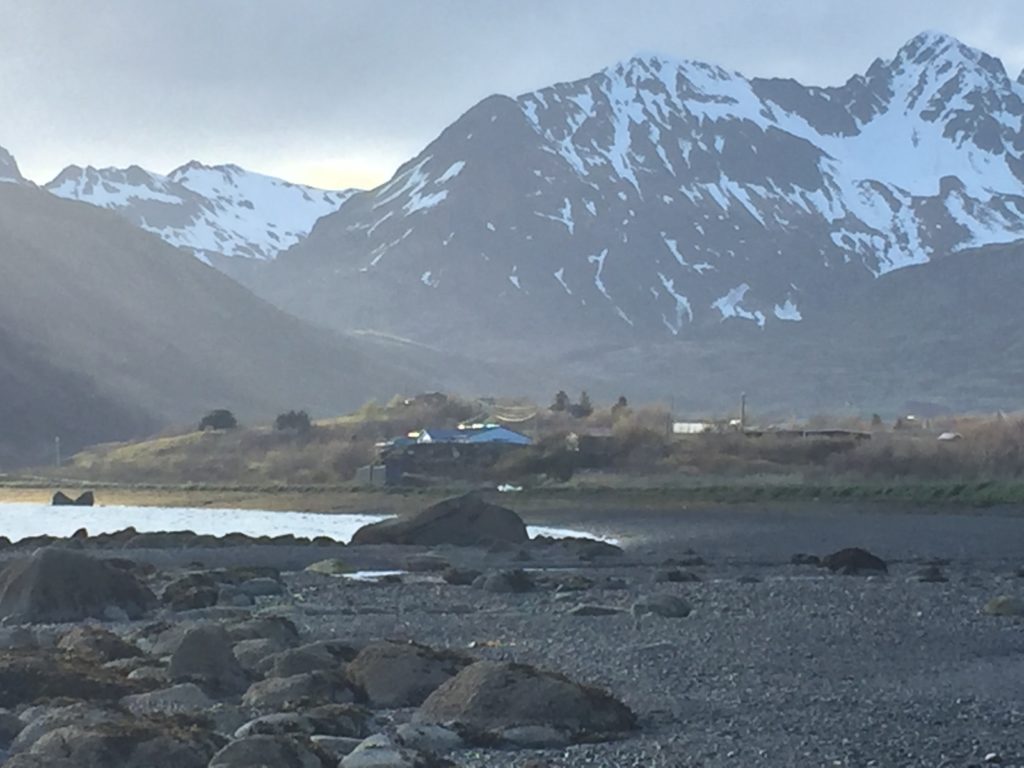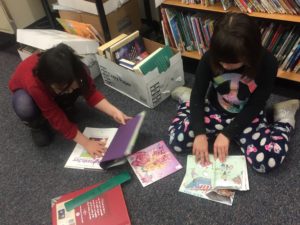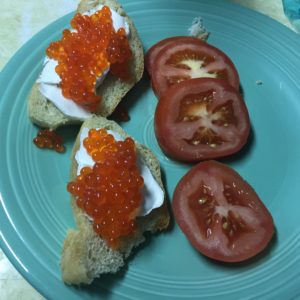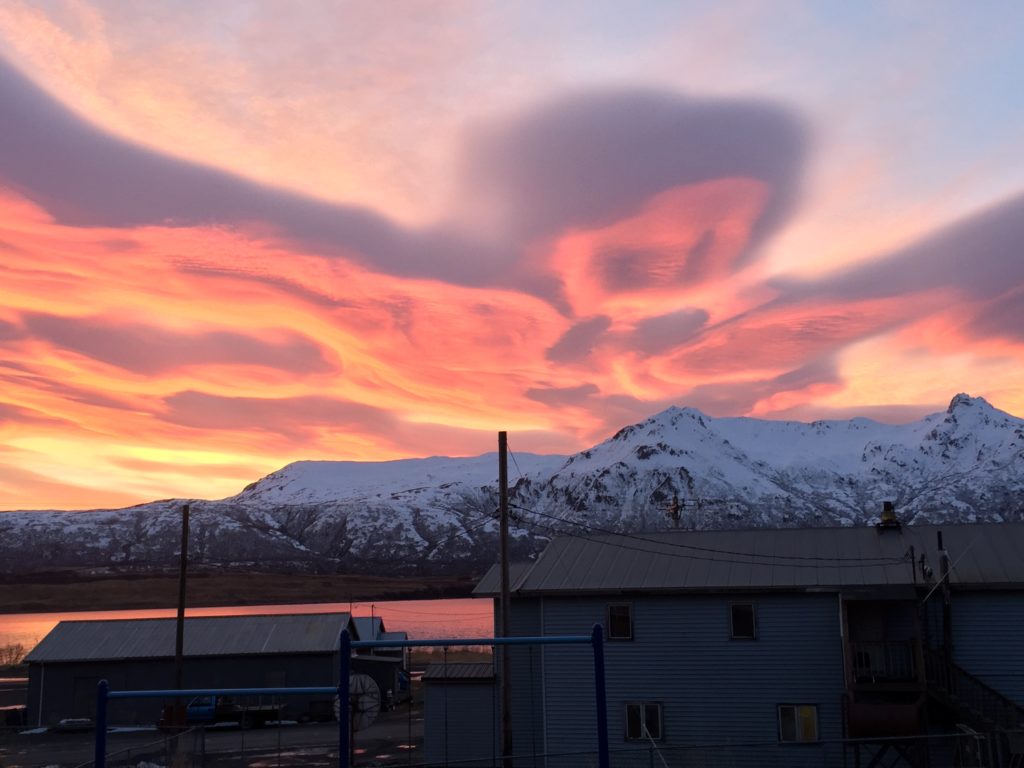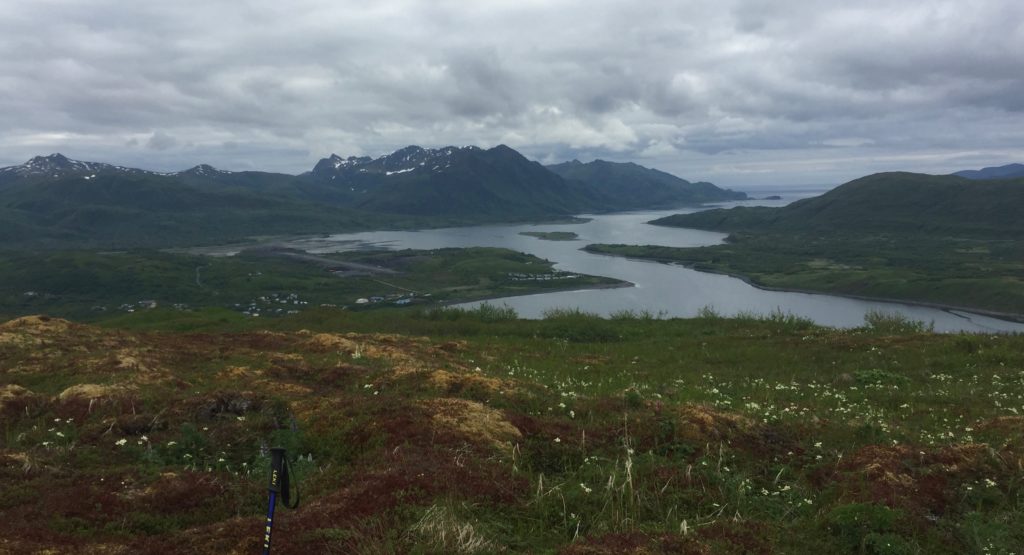Village School Teacher in Alaska feeling Grateful by Mr. Mike
Village School Teacher in Alaska Feeling Grateful
By Mike Stoesz
Live your life, get out there, go north! In the spring of 2016, I was burned out and in a rut. I’d spent over twenty years in the same elementary school building In Minneapolis Public Schools, the last few as a district math specialist. School districts everywhere face budget cuts, my position went away and I was looking at reassignment as a classroom teacher in the same room where I’d started in the 90s. It was time for an adventure
On a whim, I posted my resume on an Alaska Department of Education site and within a few days had a solid offer from the Kodiak Island Borough School District.
Looking at pictures of the mountains and ocean of Kodiak Island, I knew that we had to do it or forever be woulda, coulda, shoulda. My awesome spouse, also sick of her gig, was up for it. We looked at each other and said yes, offer accepted to teach in the tiny fishing village of Old Harbor, Kodiak, Alaska! Crazy, but we rented our house, stored our belongings, sold our car and bid adieu to our daughter off to college.
I became the teacher of a grades K, 1 and 2 combined class at Old Harbor School. Class size about eight to twelve students, depending on that day’s attendance. The Kodiak Rural Schools principals I worked under were fair and supportive of teachers. Once they figured out that a teacher was a professional and had earned the trust of the community, they mostly left us alone. The boss was only onsite a few times during the year and we did faculty meetings via video and email. I enjoyed what most of us want, autonomy and some freedom, in my case to run my class as the professional teachers strive to be, not micro-managed by an administrator.
I grew professionally and learned much from one of the aides who served as a reading specialist. She has this amazing positive energy that made kids feel self-esteem as learners and she was a master at organizing small group reading instruction. It was rewarding to see the kids grow from non-readers to emerging, confident lovers of books. Make ‘em feel good, give ‘em a sticker and a fist bump. If they like reading Green Eggs and Ham twenty times, by all means let ‘em. Any reading success we had, I owe much to her.
At Old Harbor School, I put a post-it note on books kids wanted to read and sent them around the building to read to other teachers, the secretary/cook, the day-man/bus driver and older students. They’d come back with smiley faces and positive comments on the notes, their brains buzzing with a warm feeling they wanted to repeat. That was the goodness of teaching in a small community.
Preparing and teaching a combined class turned out to be challenging and usually I put in 50-hour or more work weeks. Although class size was small, I had at least four or five different reading levels, from learning initial letter sounds to reading chapter books, each ability group needing individualized instruction. But, in the village I could work in the building anytime, evenings and weekends, and the freedom to be creative made it less like work and more like practicing the art of teaching.
In a population of 200 some folks, the lines between community and teacher blurred and we enjoyed it when kids knocked on our door and shyly asked if they could visit. My friendly spouse would server them hot cocoa and they’d be soon happily coloring, making jewelry or helping me make bread. She herself served the community as admin of the tribal government and helped with her managerial skills. In a short time, we felt accepted and satisfied that we were contributing. Folks in Old Harbor love their kids and we soon felt the same way. I got treated with respect as a teacher and was proud to be known as Mr. Mike. I’d meet students down at the local fishing hole and learned about catching and filleting Silvers. They laughed at my first attempts trying to fillet, me at first butchering that fine fish and learning some humility. All the villagers are outdoors people very much in touch with animals, plants and the environment of South East Alaska
On fair weather days, the other elementary teacher and I would chuck our lesson plans and take our students for a walk on the beach. No permission slips required or principal to deny the spontaneity of learning. On the black sand beaches of Old Harbor, we learned the Alutiiq names for jellyfish, eagles, fish, seals, ravens, seaweed, rocks, shells, driftwood and jumping jacks. Alaska village kids have a close relationship with nature and a natural capacity for play. They can spend hours painting rocks, building stick forts, skipping stones, picking berries or beachcombing for shells. Opportunity and natural setting right in the backyard of the village make for rough and tumble kids.
I was blessed to work with easy going colleagues. None of the nasty gossip or horrid infighting that I fled back in Minneapolis Public Schools. Isolated in a very real sense, the only choice is to get along. I’m forever grateful for fishing trips and collegiality. And food, for in the village the way to show love was by feeding people. I got good at curing fresh salmon roe in kosher salt and shared jars of the tasty bright orange caviar. Served on cream cheese and crackers, quite good. “Eat lots!” says Auntie Phyllis!
The view from my room was eastward, across the water and the steep mountains of Sitkalidak Island. We told time by the sun breaking over the peaks. In the winter, this was around 10:30 am! To be sure it rained a lot, recess in the big gym on those days, but there were also glorious days of sunshine and extended recess, everyone wanting to enjoy the fresh air and the miracle of the sun-drenched dreamscape.
It’s possible that Old Harbor, Alaska, the remote fishing village where I recently spent two years teaching, only exists in dreams. It exists in the imagination and reconfigures itself from the mist when a person makes the small airplane trip or ocean voyage, for there is no road access, over the rugged mountains of Kodiak and across wild waters to arrive in a magic place where salmon leap in the pristine waters and Kodiak bears, the largest land carnivores on earth, live in harmony with villagers going about their everyday lives. Emerging out of the cloud cover a visitor sees an enormous strait extending 10 miles north and 10 miles south, pinched into a narrow lane between jagged mountains like a mini-Switzerland, making a perfect shelter from the often-violent moods of the North Pacific. The original native Alutiiq settlers must have been pleased at finding this spot where mountains meet the ocean and all necessary resources are available for a thriving subsistence lifestyle that continues today. Old Harbor has been continuously inhabited for some 7,000 years.
Old Harbor is a real place but those from the outside have to pinch themselves. Family duties and missing our daughter brought us back to the cities. I have a new teaching job and am picking up where we left off. There is much more to tell about Old Harbor, suffice to say that you can’t make it up, the true adventures we had. I’m forever grateful for our time there.
Thank you Old Harbor! Quyanaasinaq Nuniaq!
